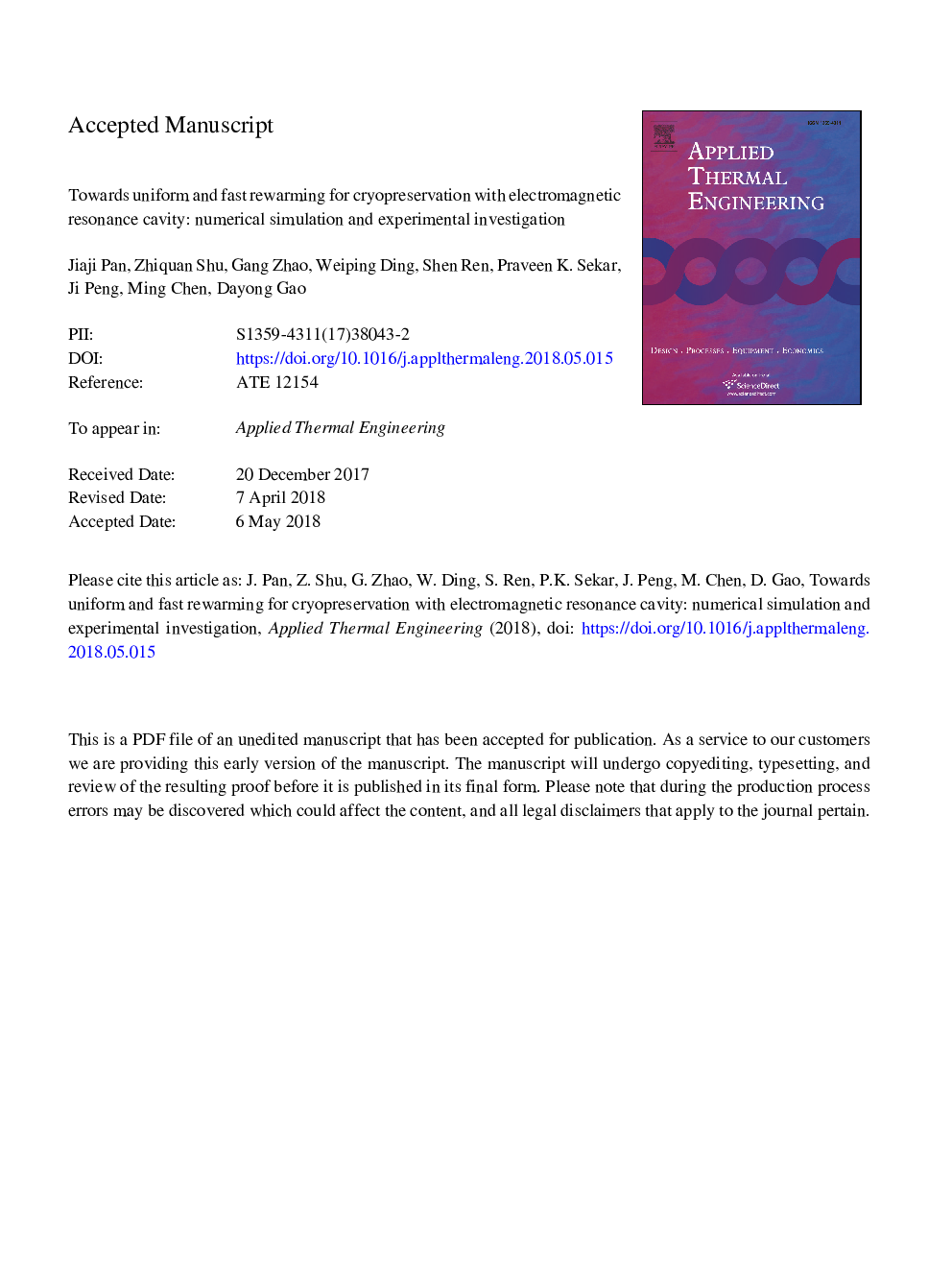| Article ID | Journal | Published Year | Pages | File Type |
|---|---|---|---|---|
| 7045195 | Applied Thermal Engineering | 2018 | 32 Pages |
Abstract
The lack of effective rewarming techniques inhibits the development of organ or large tissue cryopreservation. This work aims to optimize the electromagnetic (EM) rewarming by developing a numerical model and experimentally testing a hybrid EM-conduction method. Fundamental properties of several cryoprotective agent (CPA) solutions including thermal conductivity, specific heat, and complex electric permittivity were experimentally determined. The impact of the sample shape on the rewarming and the selection of the optimum CPA for EM rewarming were performed by numerical simulation. DPVP (41% dimethyl sulfoxide and 6% polyvinylpyrrolidone) and cylindrical shape of sample were selected due to the higher warming rate. By inserting a rod in the cryopreserved sample, which absorbs EM energy more efficiently and acts as an auxiliary heat source, a combination of EM and conductive rewarming was proposed to improve the heating uniformity. This hybrid rewarming method achieved the rewarming rate of 43â¯Â°Câ¯minâ1 for 20â¯mL DPVP using the current EM rewarming system configuration. More importantly, by using the auxiliary conduction rod, the temperature gradient was notably reduced by 50% (i.e., less than 1â¯Â°Câ¯mmâ1). The results demonstrate a potentially feasible approach to rapid and uniform rewarming for successful cryopreservation of large biomaterials.
Keywords
Related Topics
Physical Sciences and Engineering
Chemical Engineering
Fluid Flow and Transfer Processes
Authors
Jiaji Pan, Zhiquan Shu, Gang Zhao, Weiping Ding, Shen Ren, Praveen K. Sekar, Ji Peng, John Kramlich, Ming Chen, Dayong Gao,
